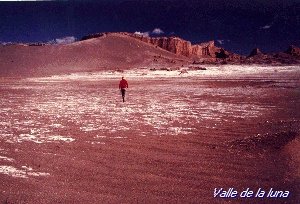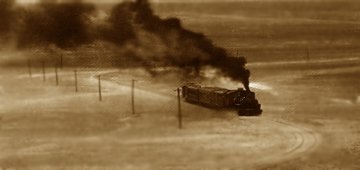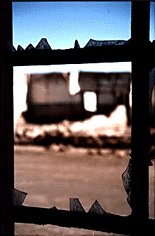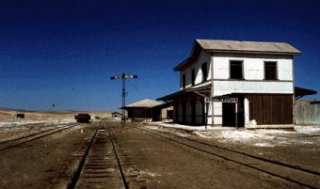
The nitrate trade

History
|
In the years 1890, numerous ships sailed on this route: they were sometimes one hundred to load in Iquique...
The german maritime transport company Ferdinand Laeisz used sailships on this route until the beginning of the Second World war. |
The White Gold legend
|
During centuries, production methods stayed primitives and production was stagnating. However, in the last decades of the XIXth century, the south american nitrate became very important.
Paradoxically, the natural nitrate is at the same time a fertilizer and a basic component for explosives... With the First World war, the export of salpetre showed its best period. The demand for chilean nitrate increased exponentially. The white gold turned the frozen north into a new California...  Just at the edge of the nitrate the concessions with dream names flourished: "Adventure", "Perseverance", "Chance" ... or with a woman name:
"Marie Eugenie", "Marie Helene", "Soledad", "Carmen".
Just at the edge of the nitrate the concessions with dream names flourished: "Adventure", "Perseverance", "Chance" ... or with a woman name:
"Marie Eugenie", "Marie Helene", "Soledad", "Carmen".
Until 1915 more than two hundred and fifty concessions were working feverishly, with a population close to three hundred thousand people and an output of four million tons a year...
The concessions were true miniature cities, made of sun and wind, toughed by cold and night, covered with salt.
The inhabitants of the pampa quickly crossed, the tanned Chilean with the pale gringo; the quiet Chinese with the impassive aymara ; the inhabitant of Santiago with the one of Atacama. The powerful english railroads forwarded unceasingly from the concessions built with the sweat of a hard labour of excluded from the privileged life...  One time when one got dressed with English linnen, drank French champagne and smoked by listening to the waltz of the " Merry Widow ".
The salpeter, more than an industry, was a magic way of life... The abundance of the money attracted foreign women and the northern ports
Taltal, Pisagua,
Tocopilla and Antofagasta became the high places of the
victorious captains of the Cape Horn...
One time when one got dressed with English linnen, drank French champagne and smoked by listening to the waltz of the " Merry Widow ".
The salpeter, more than an industry, was a magic way of life... The abundance of the money attracted foreign women and the northern ports
Taltal, Pisagua,
Tocopilla and Antofagasta became the high places of the
victorious captains of the Cape Horn...

 However, the synthetic ammoniac, Haber-Bosch method, created by the germans during the First World war, became a serious competitor of
the chilean nitrate.
However, the synthetic ammoniac, Haber-Bosch method, created by the germans during the First World war, became a serious competitor of
the chilean nitrate.
Without embargo, the coup de grâce of the white gold came from the world recession of 1930, which put an end in a few months to an adventure of almost fifty years... The concessions closed one after one, its inhabitants, incredulous gave up all, believing in a momentary situation... persuaded of a prompt return...  The silence of salt came back on Slavonia, Celia, Chacabuco, North Lagunas, Delaware...
The silence of salt came back on Slavonia, Celia, Chacabuco, North Lagunas, Delaware...
The money went away toward other foreign horizons... Le last three-masted clipper loaded her nitrate and left with no return. A return to the desert... Farewell Vergara, Araucana...
The english railroads circulate today between nothing and the silence... The graveyards with wind erased names are the last rest of a single nationality... the inhabitants of the pampa. Iquique is now a port and an... ordinary seaside resort. |
References
The Pamir